
nixtla
TimeGPT-1: production ready pre-trained Time Series Foundation Model for forecasting and anomaly detection. Generative pretrained transformer for time series trained on over 100B data points. It's capable of accurately predicting various domains such as retail, electricity, finance, and IoT with just a few lines of code 🚀.
Stars: 2646
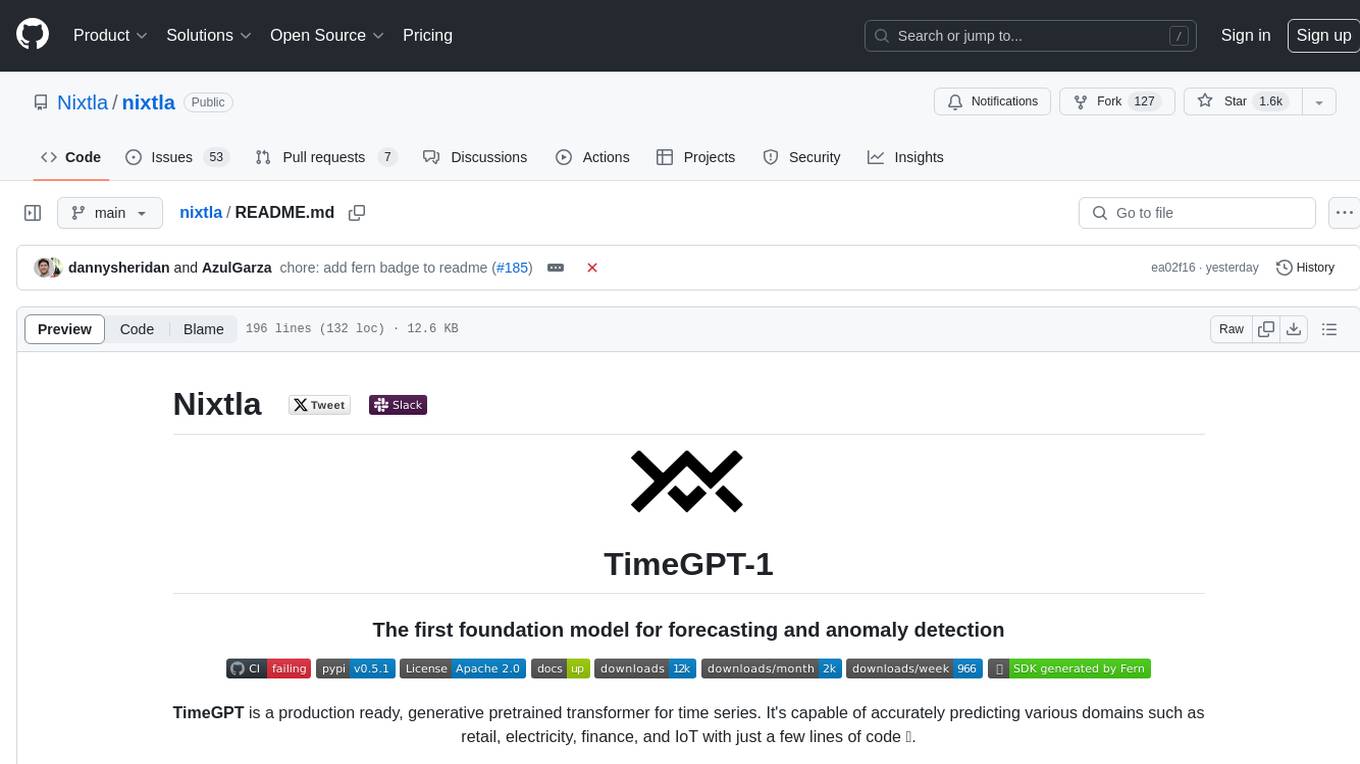
Nixtla is a production-ready generative pretrained transformer for time series forecasting and anomaly detection. It can accurately predict various domains such as retail, electricity, finance, and IoT with just a few lines of code. TimeGPT introduces a paradigm shift with its standout performance, efficiency, and simplicity, making it accessible even to users with minimal coding experience. The model is based on self-attention and is independently trained on a vast time series dataset to minimize forecasting error. It offers features like zero-shot inference, fine-tuning, API access, adding exogenous variables, multiple series forecasting, custom loss function, cross-validation, prediction intervals, and handling irregular timestamps.
README:

TimeGPT is a production ready, generative pretrained transformer for time series. It's capable of accurately predicting various domains such as retail, electricity, finance, and IoT with just a few lines of code 🚀.
- Quick Start
- Installation
- Forecasting with TimeGPT
- Anomaly Detection
- Zero-shot Results
- How to Cite
- Features and Mentions
- License
- Get in Touch
https://github.com/Nixtla/nixtla/assets/4086186/163ad9e6-7a16-44e1-b2e9-dab8a0b7b6b6
pip install nixtla>=0.5.1import pandas as pd
from nixtla import NixtlaClient# Get your API Key at dashboard.nixtla.io
# 1. Instantiate the NixtlaClient
nixtla_client = NixtlaClient(api_key = 'YOUR API KEY HERE')
# 2. Read historic electricity demand data
df = pd.read_csv('https://raw.githubusercontent.com/Nixtla/transfer-learning-time-series/main/datasets/electricity-short.csv')
# 3. Forecast the next 24 hours
fcst_df = nixtla_client.forecast(df, h=24, level=[80, 90])
# 4. Plot your results (optional)
nixtla_client.plot(df, fcst_df, level=[80, 90])# Get your API Key at dashboard.nixtla.io
# 1. Instantiate the NixtlaClient
nixtla_client = NixtlaClient(api_key = 'YOUR API KEY HERE')
# 2. Read Data # Wikipedia visits of NFL Star (
df = pd.read_csv('https://datasets-nixtla.s3.amazonaws.com/peyton-manning.csv')
# 3. Detect Anomalies
anomalies_df = nixtla_client.detect_anomalies(df, time_col='timestamp', target_col='value', freq='D')
# 4. Plot your results (optional)
nixtla_client.plot(df, anomalies_df,time_col='timestamp', target_col='value')Explore our API Reference to discover how to leverage TimeGPT across various programming languages including JavaScript, Go, and more.
-
Zero-shot Inference: TimeGPT can generate forecasts and detect anomalies straight out of the box, requiring no prior training data. This allows for immediate deployment and quick insights from any time series data.
-
Fine-tuning: Enhance TimeGPT's capabilities by fine-tuning the model on your specific datasets, enabling the model to adapt to the nuances of your unique time series data and improving performance on tailored tasks.
-
API Access: Integrate TimeGPT seamlessly into your applications via our robust API. Upcoming support for Azure Studio will provide even more flexible integration options. Alternatively, deploy TimeGPT on your own infrastructure to maintain full control over your data and workflows.
-
Add Exogenous Variables: Incorporate additional variables that might influence your predictions to enhance forecast accuracy. (E.g. Special Dates, events or prices)
-
Multiple Series Forecasting: Simultaneously forecast multiple time series data, optimizing workflows and resources.
-
Custom Loss Function: Tailor the fine-tuning process with a custom loss function to meet specific performance metrics.
-
Cross Validation: Implement out of the box cross-validation techniques to ensure model robustness and generalizability.
-
Prediction Intervals: Provide intervals in your predictions to quantify uncertainty effectively.
-
Irregular Timestamps: Handle data with irregular timestamps, accommodating non-uniform interval series without preprocessing.
Dive into our comprehensive documentation to discover examples and practical use cases for TimeGPT. Our documentation covers a wide range of topics, including:
-
Getting Started: Begin with our user-friendly Quickstart Guide and learn how to set up your API key effortlessly.
-
Advanced Techniques: Master advanced forecasting methods and learn how to enhance model accuracy with our tutorials on anomaly detection, fine-tuning models using specific loss functions, and scaling computations across distributed frameworks such as Spark, Dask, and Ray.
-
Specialized Topics: Explore specialized topics like handling exogenous variables, model validation through cross-validation, and strategies for forecasting under uncertainty.
-
Real-World Applications: Uncover how TimeGPT is applied in real-world scenarios through case studies on forecasting web traffic and predicting Bitcoin prices.
Time series data is pivotal across various sectors, including finance, healthcare, meteorology, and social sciences. Whether it's monitoring ocean tides or tracking the Dow Jones's daily closing values, time series data is crucial for forecasting and decision-making.
Traditional analysis methods such as ARIMA, ETS, MSTL, Theta, CES, machine learning models like XGBoost and LightGBM, and deep learning approaches have been standard tools for analysts. However, TimeGPT introduces a paradigm shift with its standout performance, efficiency, and simplicity. Thanks to its zero-shot inference capability, TimeGPT streamlines the analytical process, making it accessible even to users with minimal coding experience.
TimeGPT is user-friendly and low-code, enabling users to upload their time series data and either generate forecasts or detect anomalies with just a single line of code. As the only foundation model for time series analysis out of the box, TimeGPT can be integrated via our public APIs, through Azure Studio (coming soon), or deployed on your own infrastructure.
Self-attention, the revolutionary concept introduced by the paper “Attention is all you need“, is the basis of the this foundational model. The TimeGPT model is not based on any existing large language model(LLMs). It is independently trained on vast timeseries dataset as a large transformer model and is designed so as to minimize the forecasting error.
The architecture consists of an encoder-decoder structure with multiple layers, each with residual connections and layer normalization. Finally, a linear layer maps the decoder’s output to the forecasting window dimension. The general intuition is that attentionbased mechanisms are able to capture the diversity of past events and correctly extrapolate potential future distributions.
TimeGPT was trained on, to our knowledge, the largest collection of publicly available time series, collectively encompassing over 100 billion data points. This training set incorporates time series from a broad array of domains, including finance, economics, demographics, healthcare, weather, IoT sensor data, energy, web traffic, sales, transport, and banking. Due to this diverse set of domains, the training dataset contains time series with a wide range of characteristics
TimeGPT has been tested for its zero-shot inference capabilities on more than 300K unique series, which involve using the model without additional fine-tuning on the test dataset. TimeGPT outperforms a comprehensive range of well-established statistical and cutting-edge deep learning models, consistently ranking among the top three performers across various frequencies.
TimeGPT also excels by offering simple and rapid predictions using a pre-trained model. This stands in stark contrast to other models that typically require an extensive training and prediction pipeline.
For zero-shot inference, our internal tests recorded an average GPU inference speed of 0.6 milliseconds per series for TimeGPT, which nearly mirrors that of the simple Seasonal Naive.
If you find TimeGPT useful for your research, please consider citing the associated paper:
@misc{garza2023timegpt1,
title={TimeGPT-1},
author={Azul Garza and Max Mergenthaler-Canseco},
year={2023},
eprint={2310.03589},
archivePrefix={arXiv},
primaryClass={cs.LG}
}
TimeGPT has been featured in many publications and has been recognized for its innovative approach to time series forecasting. Here are some of the features and mentions:
- TimeGPT Revolutionizing Time Series Forecasting
- TimeGPT: The First Foundation Model for Time Series Forecasting
- TimeGPT: Revolutionising Time Series Forecasting with Generative Models
- TimeGPT on Turing Post
- TimeGPT Presentation at AWS Events
- TimeGPT: Machine Learning for Time Series Made Accessible - Podcast
- TimeGPT on The Data Exchange
- How TimeGPT Transforms Predictive Analytics with AI
- TimeGPT: The First Foundation Model - AI Horizon Forecast
TimeGPT is closed source. However, this SDK is open source and available under the Apache 2.0 License. Feel free to contribute (check out the Contributing guide for more details).
For any questions or feedback, please feel free to reach out to us at ops [at] nixtla.io.
For Tasks:
Click tags to check more tools for each tasksFor Jobs:
Alternative AI tools for nixtla
Similar Open Source Tools

nixtla
Nixtla is a production-ready generative pretrained transformer for time series forecasting and anomaly detection. It can accurately predict various domains such as retail, electricity, finance, and IoT with just a few lines of code. TimeGPT introduces a paradigm shift with its standout performance, efficiency, and simplicity, making it accessible even to users with minimal coding experience. The model is based on self-attention and is independently trained on a vast time series dataset to minimize forecasting error. It offers features like zero-shot inference, fine-tuning, API access, adding exogenous variables, multiple series forecasting, custom loss function, cross-validation, prediction intervals, and handling irregular timestamps.
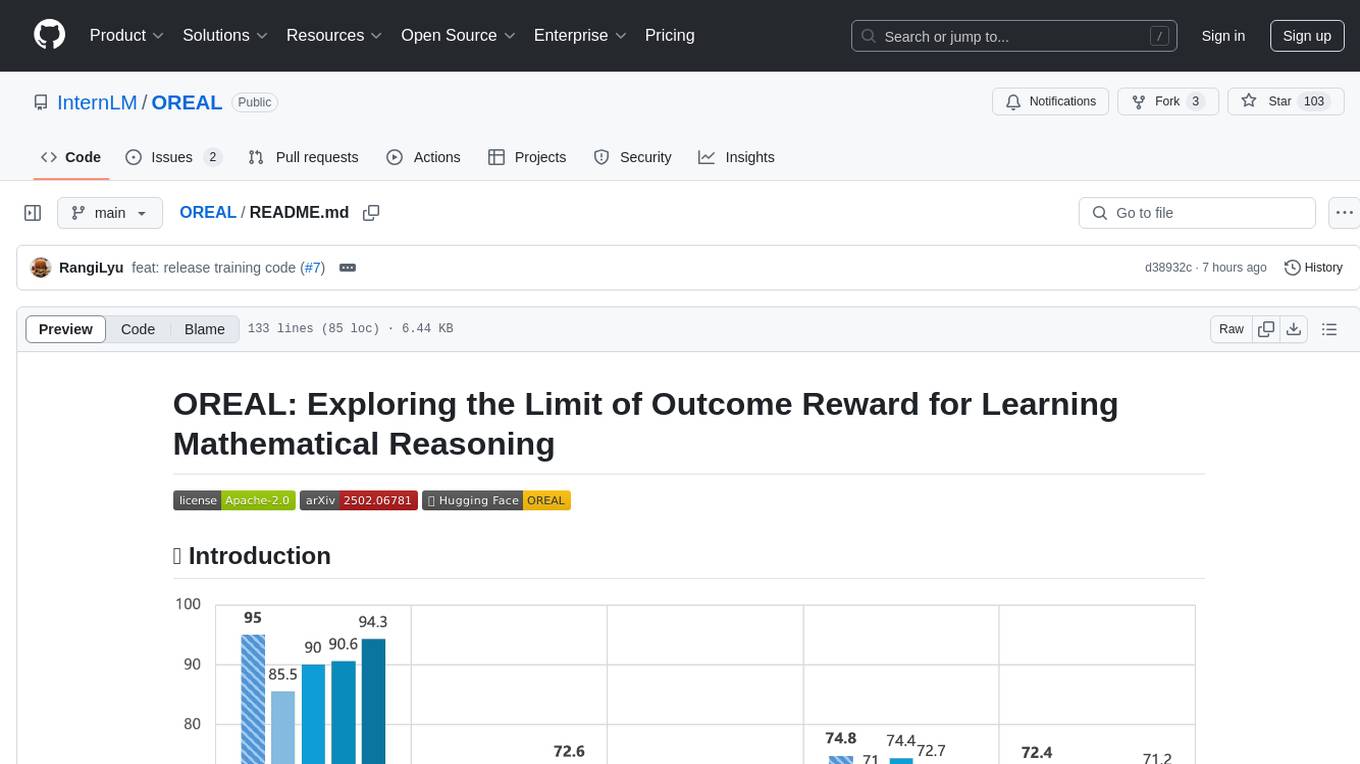
OREAL
OREAL is a reinforcement learning framework designed for mathematical reasoning tasks, aiming to achieve optimal performance through outcome reward-based learning. The framework utilizes behavior cloning, reshaping rewards, and token-level reward models to address challenges in sparse rewards and partial correctness. OREAL has achieved significant results, with a 7B model reaching 94.0 pass@1 accuracy on MATH-500 and surpassing previous 32B models. The tool provides training tutorials and Hugging Face model repositories for easy access and implementation.
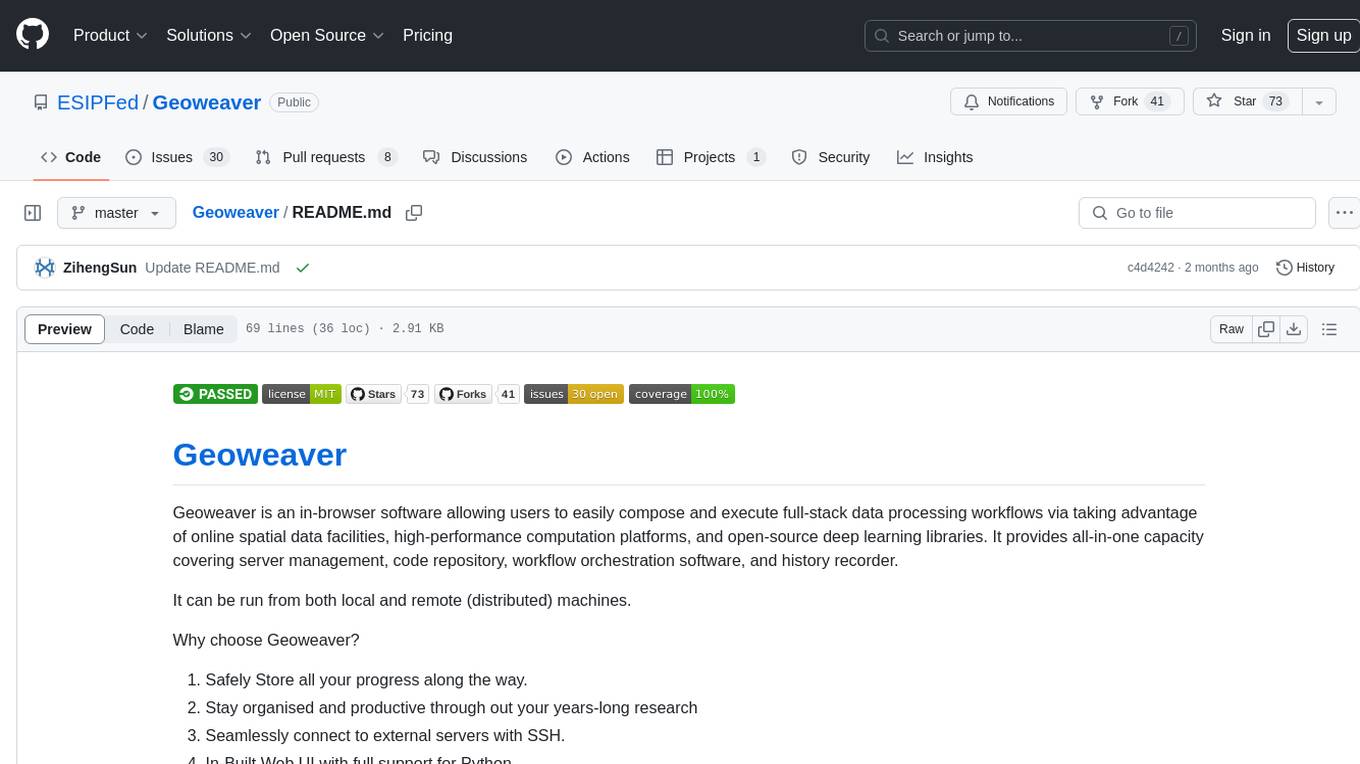
Geoweaver
Geoweaver is an in-browser software that enables users to easily compose and execute full-stack data processing workflows using online spatial data facilities, high-performance computation platforms, and open-source deep learning libraries. It provides server management, code repository, workflow orchestration software, and history recording capabilities. Users can run it from both local and remote machines. Geoweaver aims to make data processing workflows manageable for non-coder scientists and preserve model run history. It offers features like progress storage, organization, SSH connection to external servers, and a web UI with Python support.
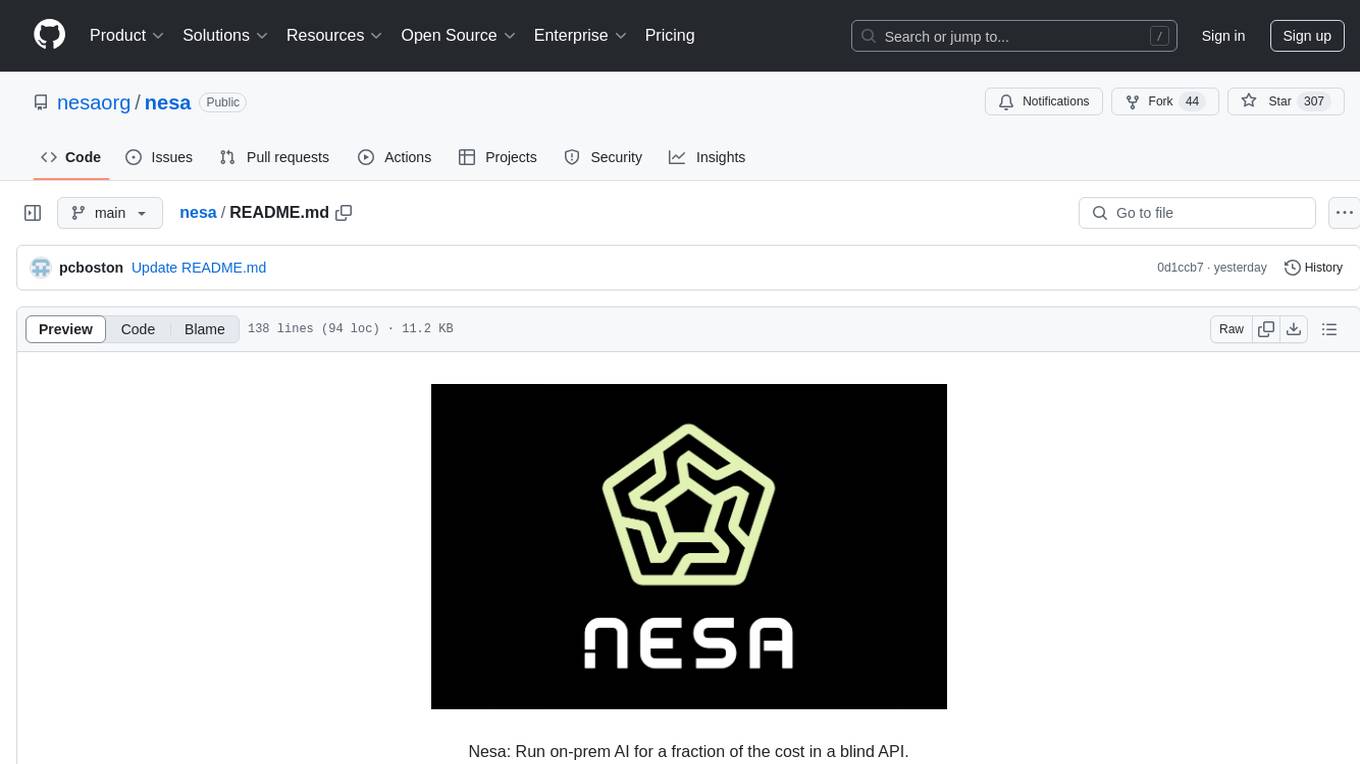
nesa
Nesa is a tool that allows users to run on-prem AI for a fraction of the cost through a blind API. It provides blind privacy, zero latency on protected inference, wide model coverage, cost savings compared to cloud and on-prem AI, RAG support, and ChatGPT compatibility. Nesa achieves blind AI through Equivariant Encryption (EE), a new security technology that provides complete inference encryption with no additional latency. EE allows users to perform inference on neural networks without exposing the underlying data, preserving data privacy and security.
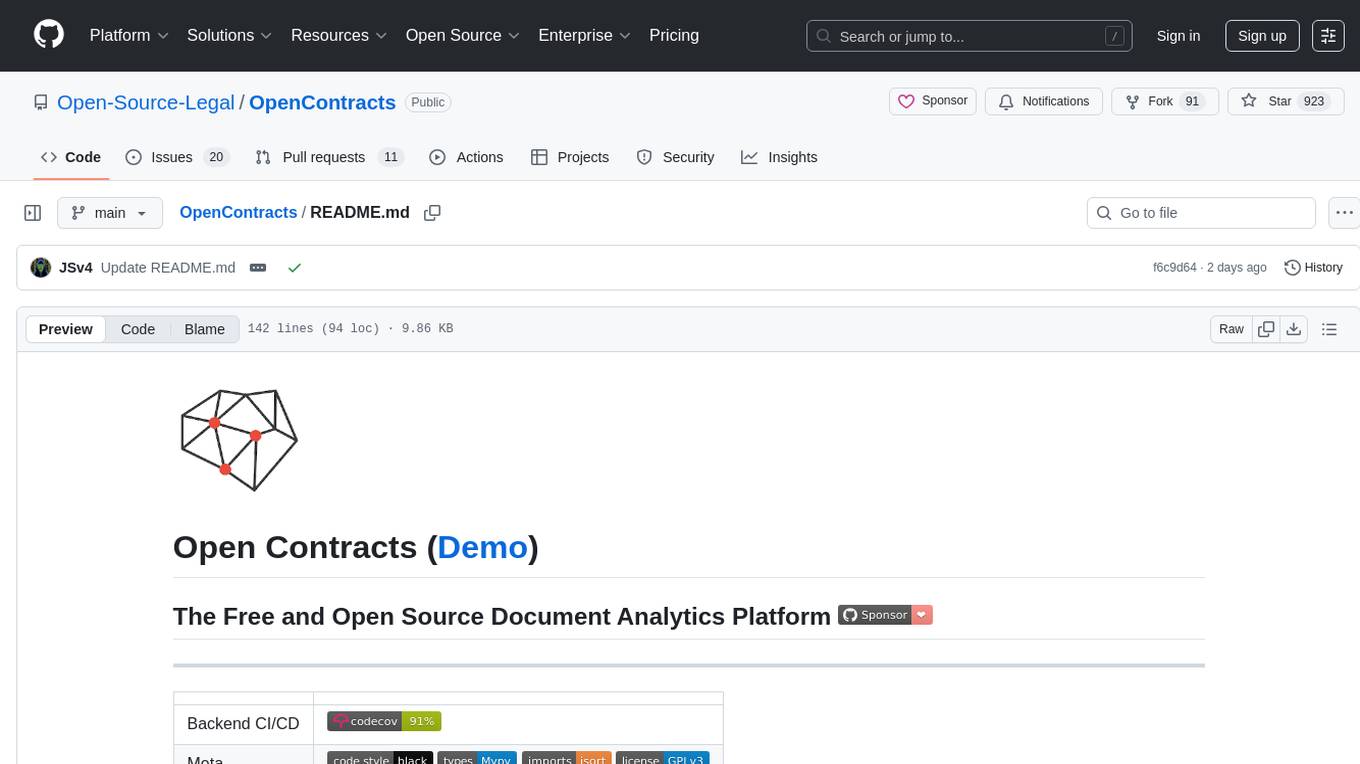
OpenContracts
OpenContracts is a free and open-source document analytics platform designed to empower knowledge owners and subject matter experts. It supports multiple document formats, ingestion pipelines, and custom document analytics tools. Users can manage documents, define metadata schemas, extract layout features, generate vector embeddings, deploy custom analyzers, support new document formats, annotate documents, extract bulk data, and create bespoke data extraction workflows. The tool aims to provide a standardized architecture for analyzing contracts and making data portable, with a focus on PDF and text-based formats. It includes features like document management, layout parsing, pluggable architectures, human annotation interface, and a custom LLM framework for conversation management and real-time streaming.
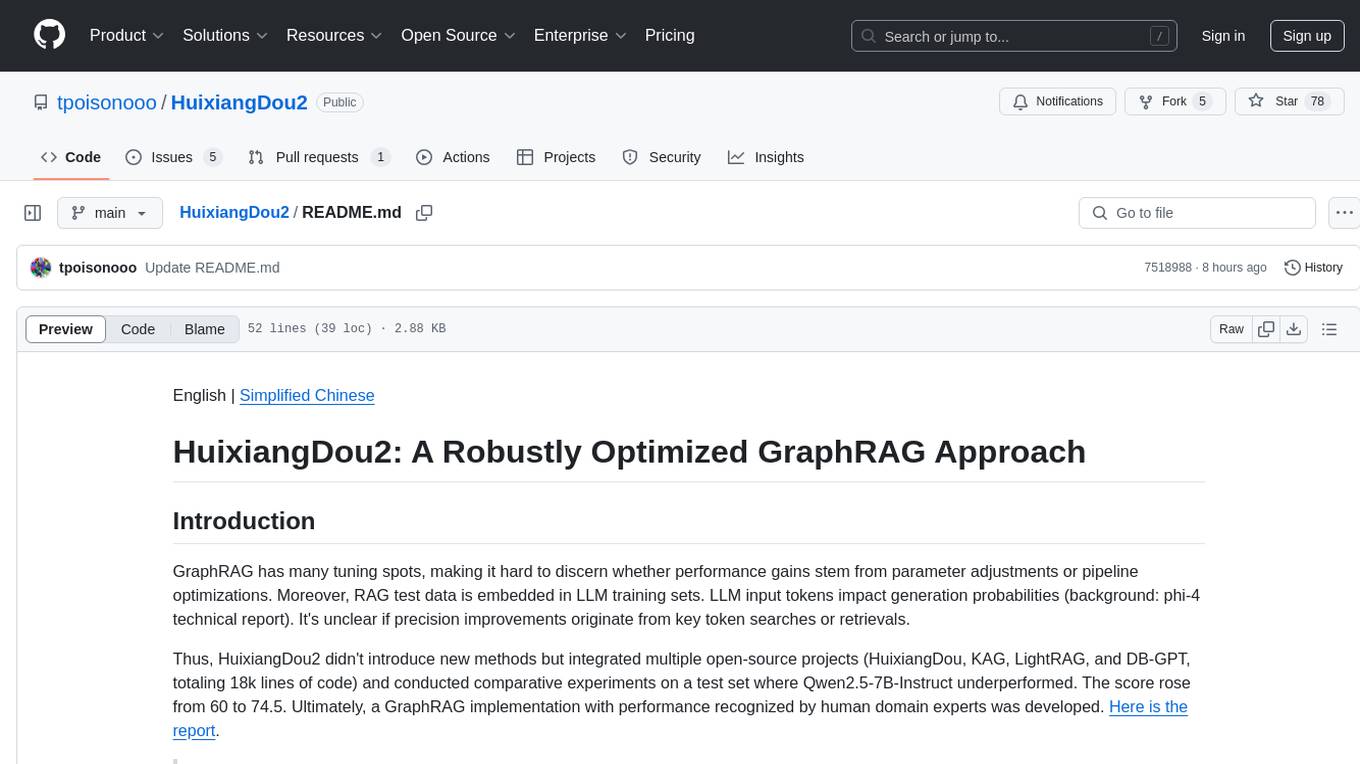
HuixiangDou2
HuixiangDou2 is a robustly optimized GraphRAG approach that integrates multiple open-source projects to improve performance in graph-based augmented generation. It conducts comparative experiments and achieves a significant score increase, leading to a GraphRAG implementation with recognized performance. The repository provides code improvements, dense retrieval for querying entities and relationships, real domain knowledge testing, and impact analysis on accuracy.
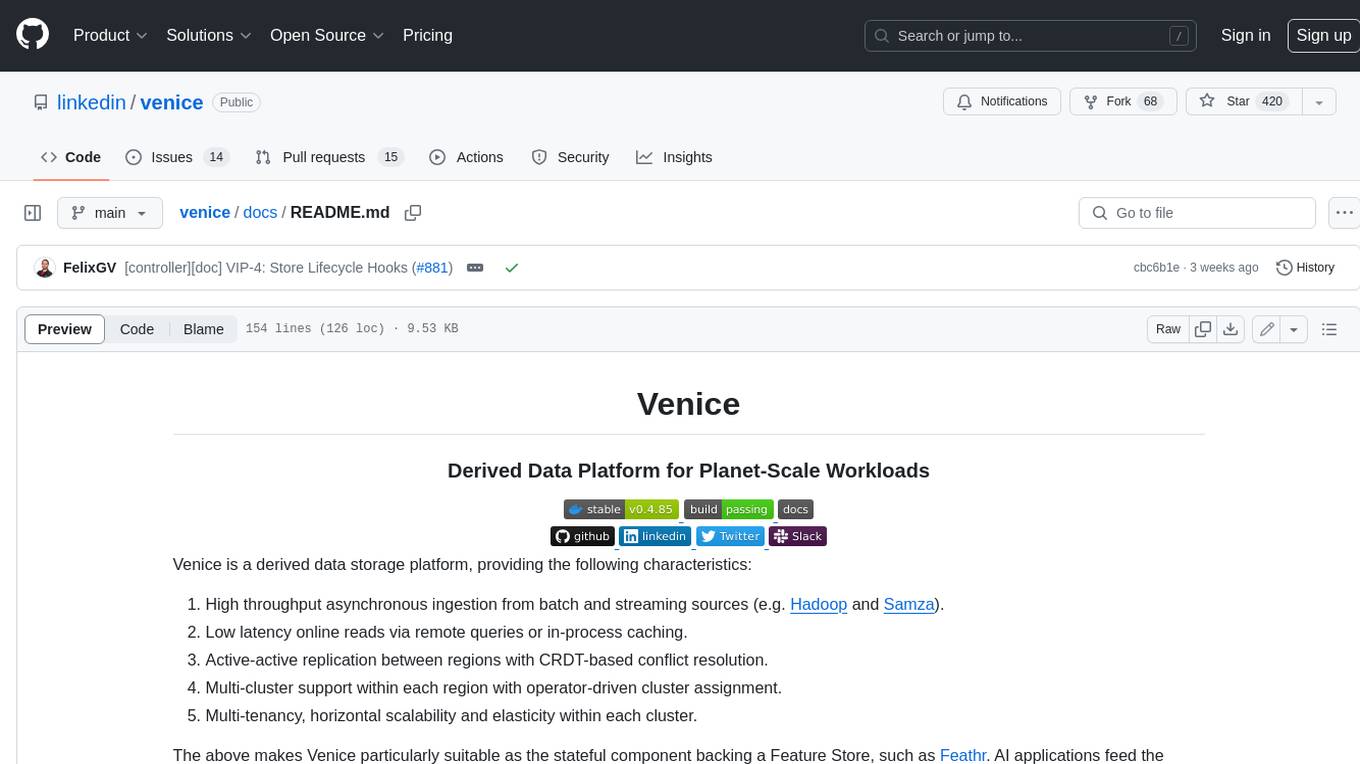
venice
Venice is a derived data storage platform, providing the following characteristics: 1. High throughput asynchronous ingestion from batch and streaming sources (e.g. Hadoop and Samza). 2. Low latency online reads via remote queries or in-process caching. 3. Active-active replication between regions with CRDT-based conflict resolution. 4. Multi-cluster support within each region with operator-driven cluster assignment. 5. Multi-tenancy, horizontal scalability and elasticity within each cluster. The above makes Venice particularly suitable as the stateful component backing a Feature Store, such as Feathr. AI applications feed the output of their ML training jobs into Venice and then query the data for use during online inference workloads.
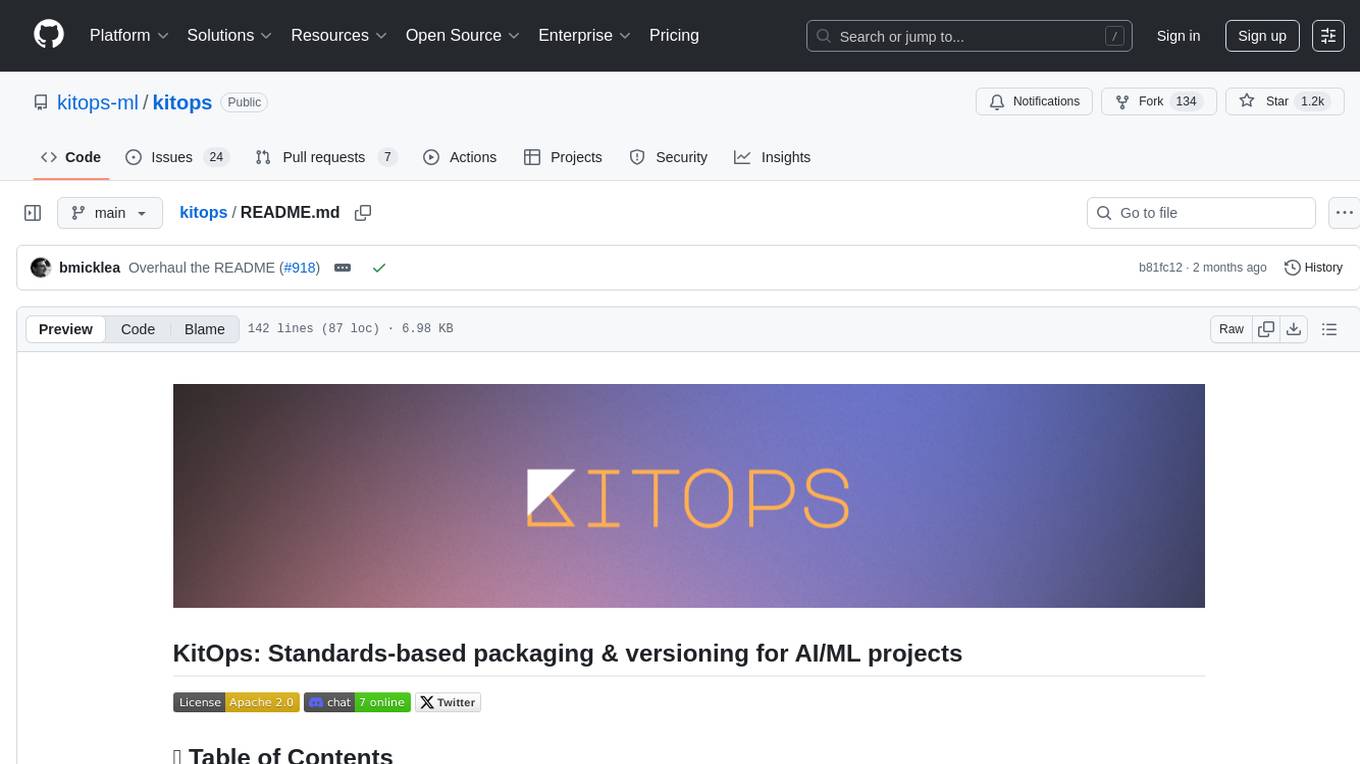
kitops
KitOps is a CNCF open standards project for packaging, versioning, and securely sharing AI/ML projects. It provides a unified solution for packaging, versioning, and managing assets in security-conscious enterprises, governments, and cloud operators. KitOps elevates AI artifacts to first-class, governed assets through ModelKits, which are tamper-proof, signable, and compatible with major container registries. The tool simplifies collaboration between data scientists, developers, and SREs, ensuring reliable and repeatable workflows for both development and operations. KitOps supports packaging for various types of models, including large language models, computer vision models, multi-modal models, predictive models, and audio models. It also facilitates compliance with the EU AI Act by offering tamper-proof, signable, and auditable ModelKits.
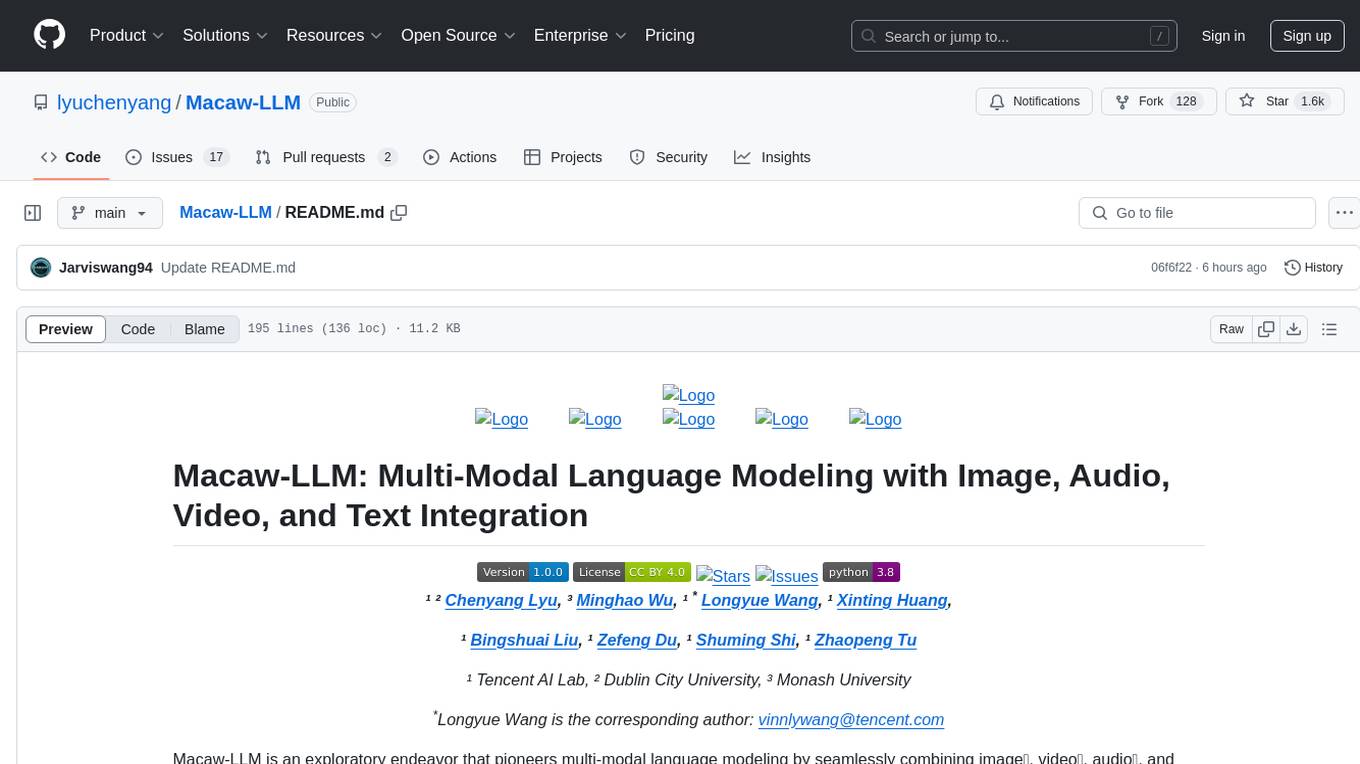
Macaw-LLM
Macaw-LLM is a pioneering multi-modal language modeling tool that seamlessly integrates image, audio, video, and text data. It builds upon CLIP, Whisper, and LLaMA models to process and analyze multi-modal information effectively. The tool boasts features like simple and fast alignment, one-stage instruction fine-tuning, and a new multi-modal instruction dataset. It enables users to align multi-modal features efficiently, encode instructions, and generate responses across different data types.
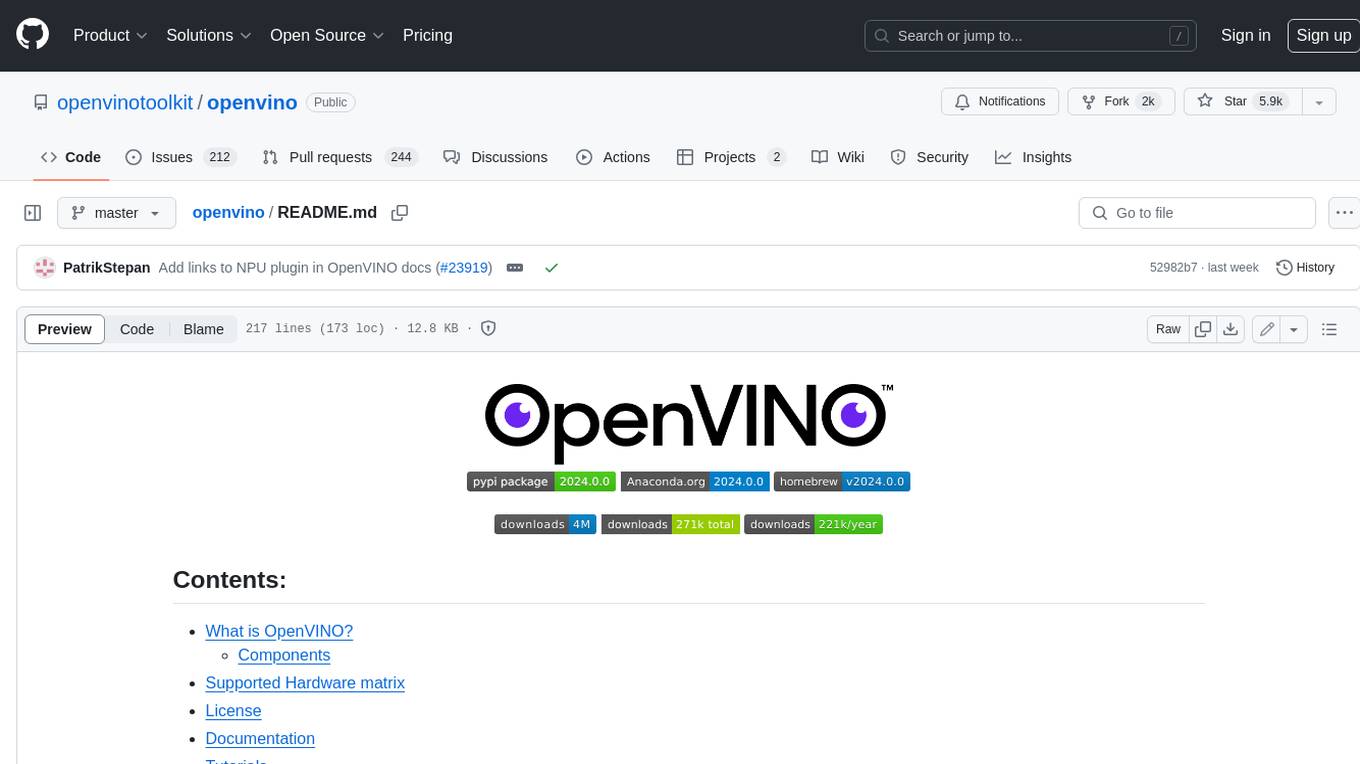
openvino
OpenVINO™ is an open-source toolkit for optimizing and deploying AI inference. It provides a common API to deliver inference solutions on various platforms, including CPU, GPU, NPU, and heterogeneous devices. OpenVINO™ supports pre-trained models from Open Model Zoo and popular frameworks like TensorFlow, PyTorch, and ONNX. Key components of OpenVINO™ include the OpenVINO™ Runtime, plugins for different hardware devices, frontends for reading models from native framework formats, and the OpenVINO Model Converter (OVC) for adjusting models for optimal execution on target devices.
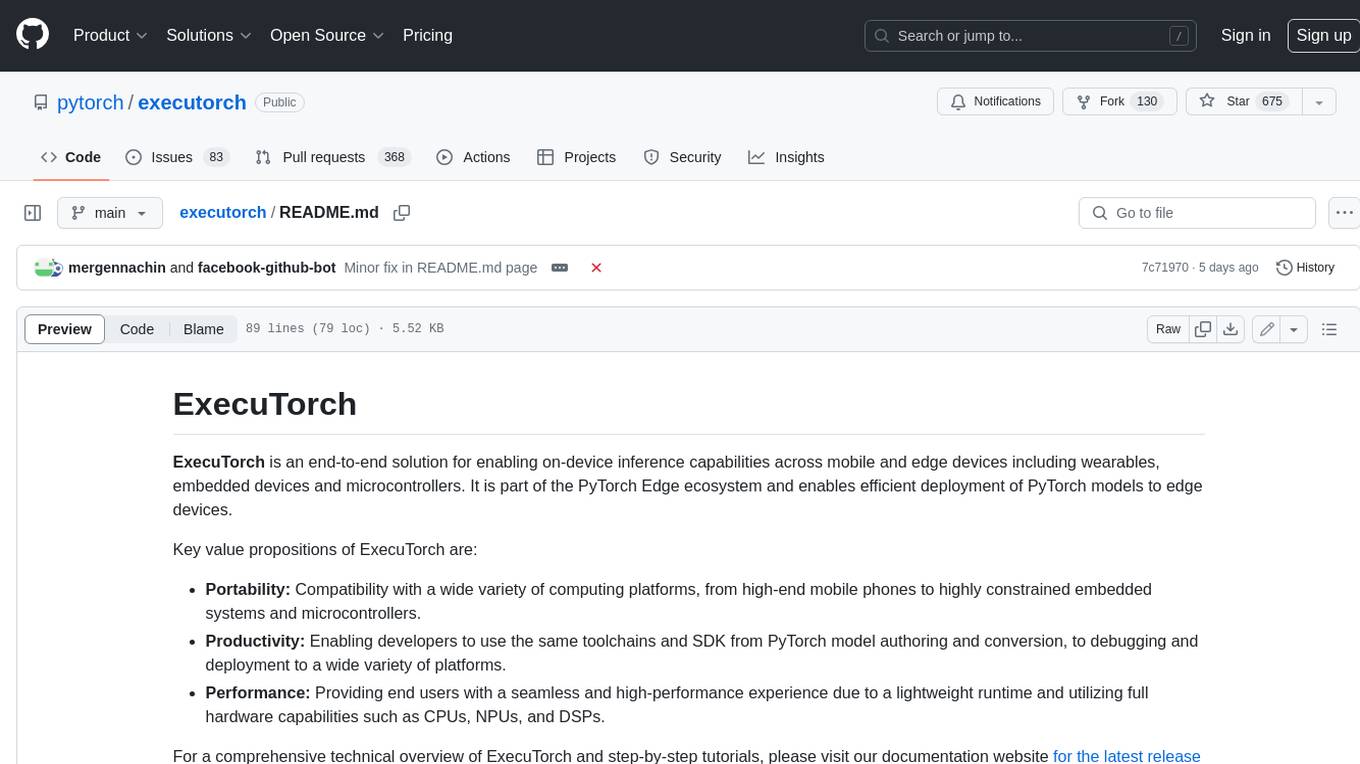
executorch
ExecuTorch is an end-to-end solution for enabling on-device inference capabilities across mobile and edge devices including wearables, embedded devices and microcontrollers. It is part of the PyTorch Edge ecosystem and enables efficient deployment of PyTorch models to edge devices. Key value propositions of ExecuTorch are: * **Portability:** Compatibility with a wide variety of computing platforms, from high-end mobile phones to highly constrained embedded systems and microcontrollers. * **Productivity:** Enabling developers to use the same toolchains and SDK from PyTorch model authoring and conversion, to debugging and deployment to a wide variety of platforms. * **Performance:** Providing end users with a seamless and high-performance experience due to a lightweight runtime and utilizing full hardware capabilities such as CPUs, NPUs, and DSPs.
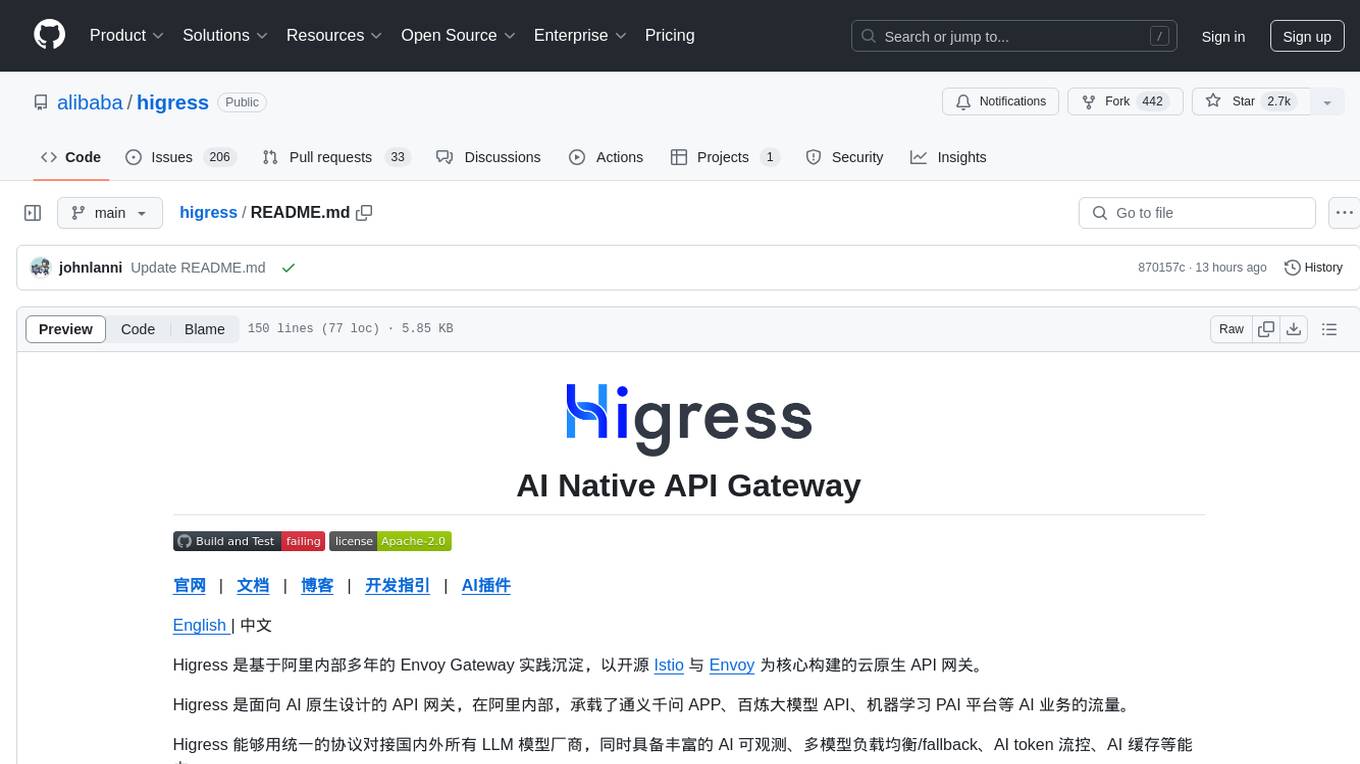
higress
Higress is an open-source cloud-native API gateway built on the core of Istio and Envoy, based on Alibaba's internal practice of Envoy Gateway. It is designed for AI-native API gateway, serving AI businesses such as Tongyi Qianwen APP, Bailian Big Model API, and Machine Learning PAI platform. Higress provides capabilities to interface with LLM model vendors, AI observability, multi-model load balancing/fallback, AI token flow control, and AI caching. It offers features for AI gateway, Kubernetes Ingress gateway, microservices gateway, and security protection gateway, with advantages in production-level scalability, stream processing, extensibility, and ease of use.
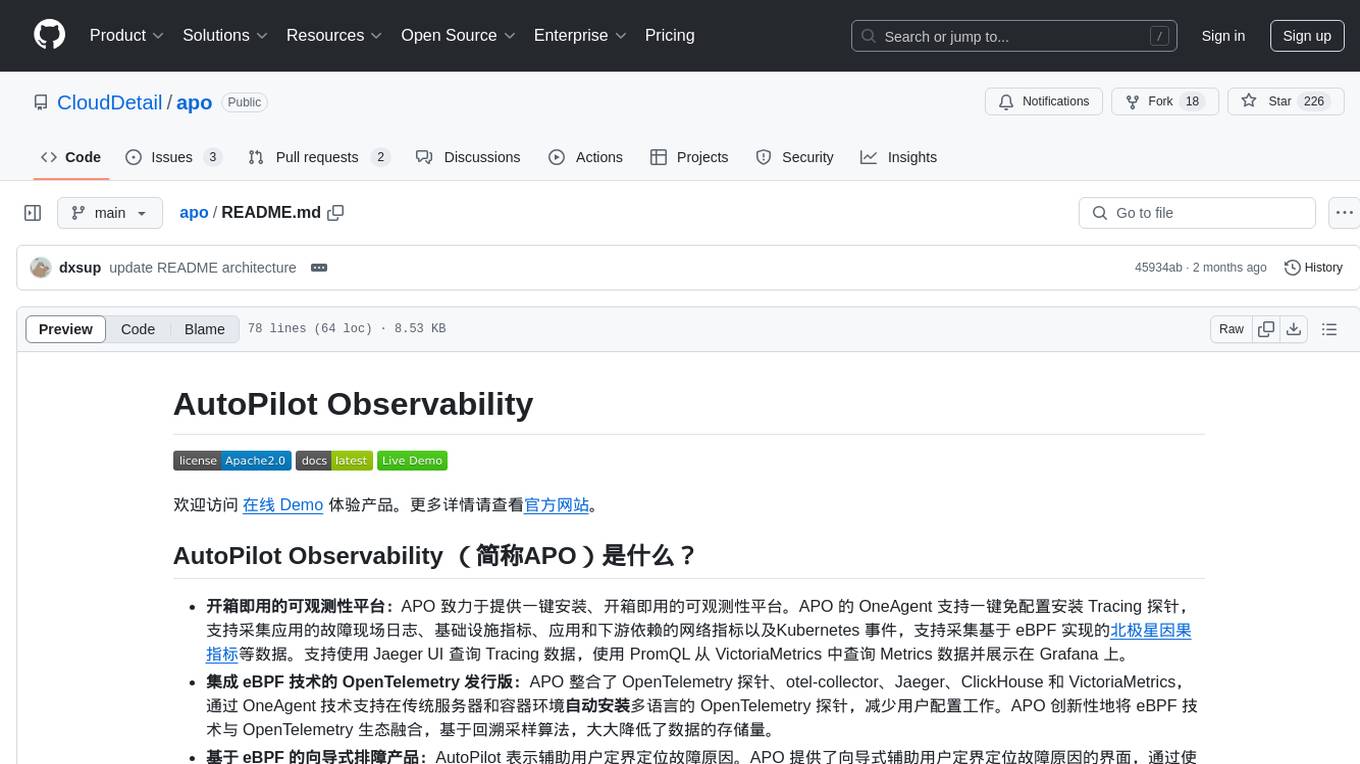
apo
AutoPilot Observability (APO) is an out-of-the-box observability platform that provides one-click installation and ready-to-use capabilities. APO's OneAgent supports one-click configuration-free installation of Tracing probes, collects application fault scene logs, infrastructure metrics, network metrics of applications and downstream dependencies, and Kubernetes events. It supports collecting causality metrics based on eBPF implementation. APO integrates OpenTelemetry probes, otel-collector, Jaeger, ClickHouse, and VictoriaMetrics, reducing user configuration work. APO innovatively integrates eBPF technology with the OpenTelemetry ecosystem, significantly reducing data storage volume. It offers guided troubleshooting using eBPF technology to assist users in pinpointing fault causes on a single page.
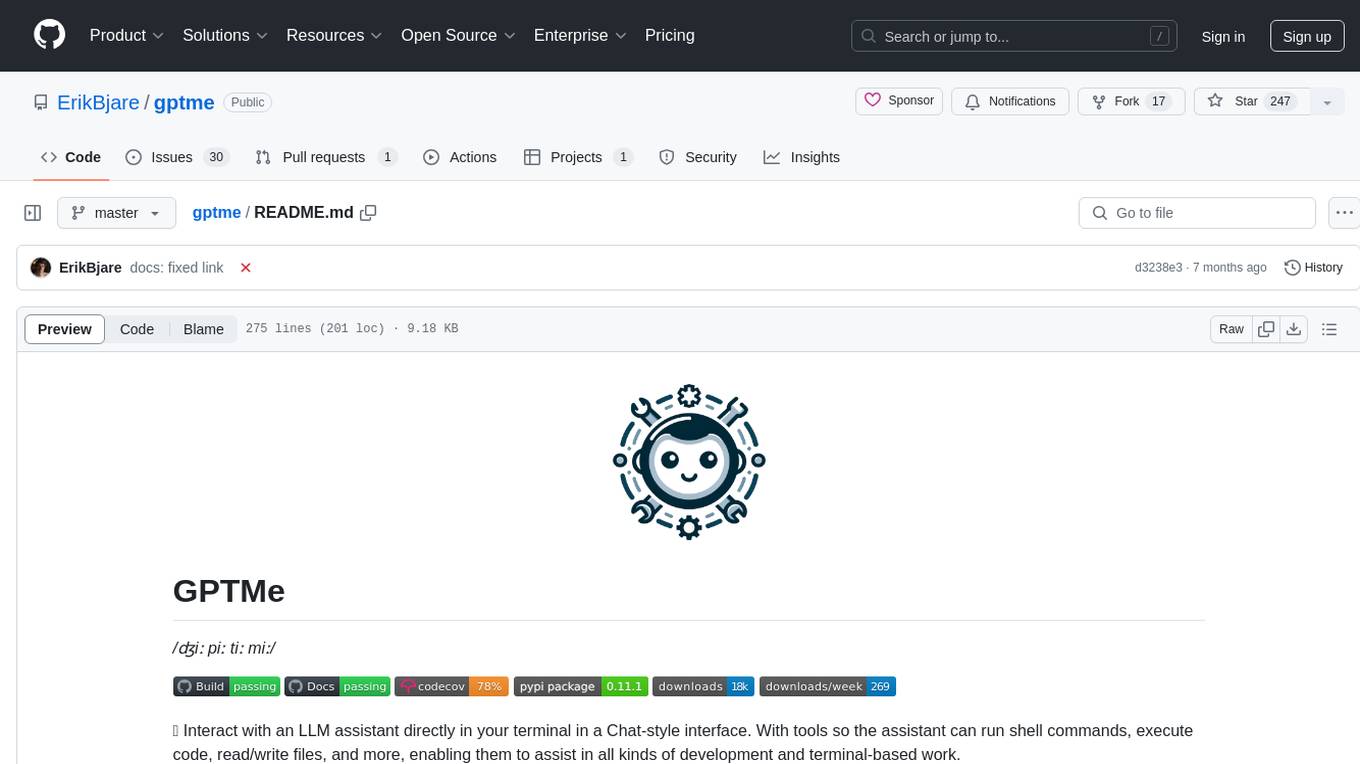
gptme
GPTMe is a tool that allows users to interact with an LLM assistant directly in their terminal in a chat-style interface. The tool provides features for the assistant to run shell commands, execute code, read/write files, and more, making it suitable for various development and terminal-based tasks. It serves as a local alternative to ChatGPT's 'Code Interpreter,' offering flexibility and privacy when using a local model. GPTMe supports code execution, file manipulation, context passing, self-correction, and works with various AI models like GPT-4. It also includes a GitHub Bot for requesting changes and operates entirely in GitHub Actions. In progress features include handling long contexts intelligently, a web UI and API for conversations, web and desktop vision, and a tree-based conversation structure.
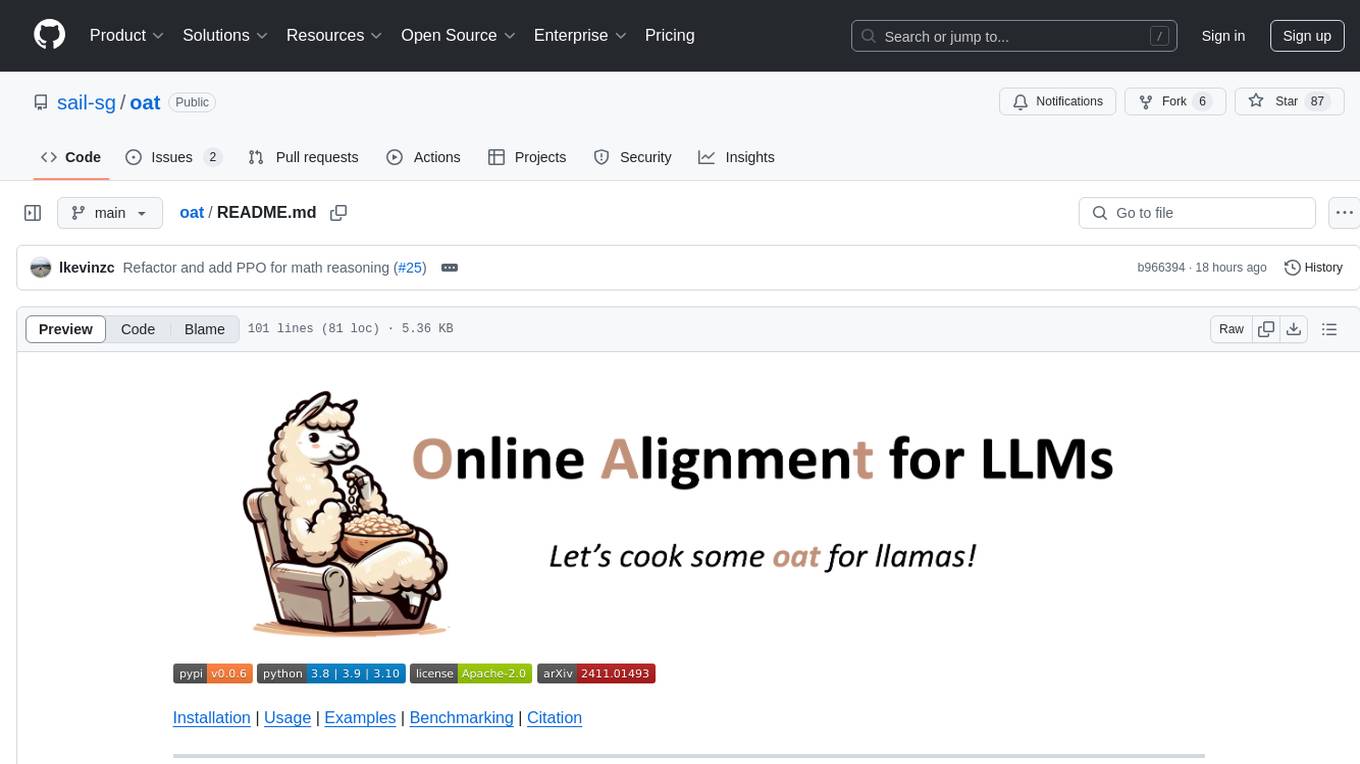
oat
Oat is a simple and efficient framework for running online LLM alignment algorithms. It implements a distributed Actor-Learner-Oracle architecture, with components optimized using state-of-the-art tools. Oat simplifies the experimental pipeline of LLM alignment by serving an Oracle online for preference data labeling and model evaluation. It provides a variety of oracles for simulating feedback and supports verifiable rewards. Oat's modular structure allows for easy inheritance and modification of classes, enabling rapid prototyping and experimentation with new algorithms. The framework implements cutting-edge online algorithms like PPO for math reasoning and various online exploration algorithms.
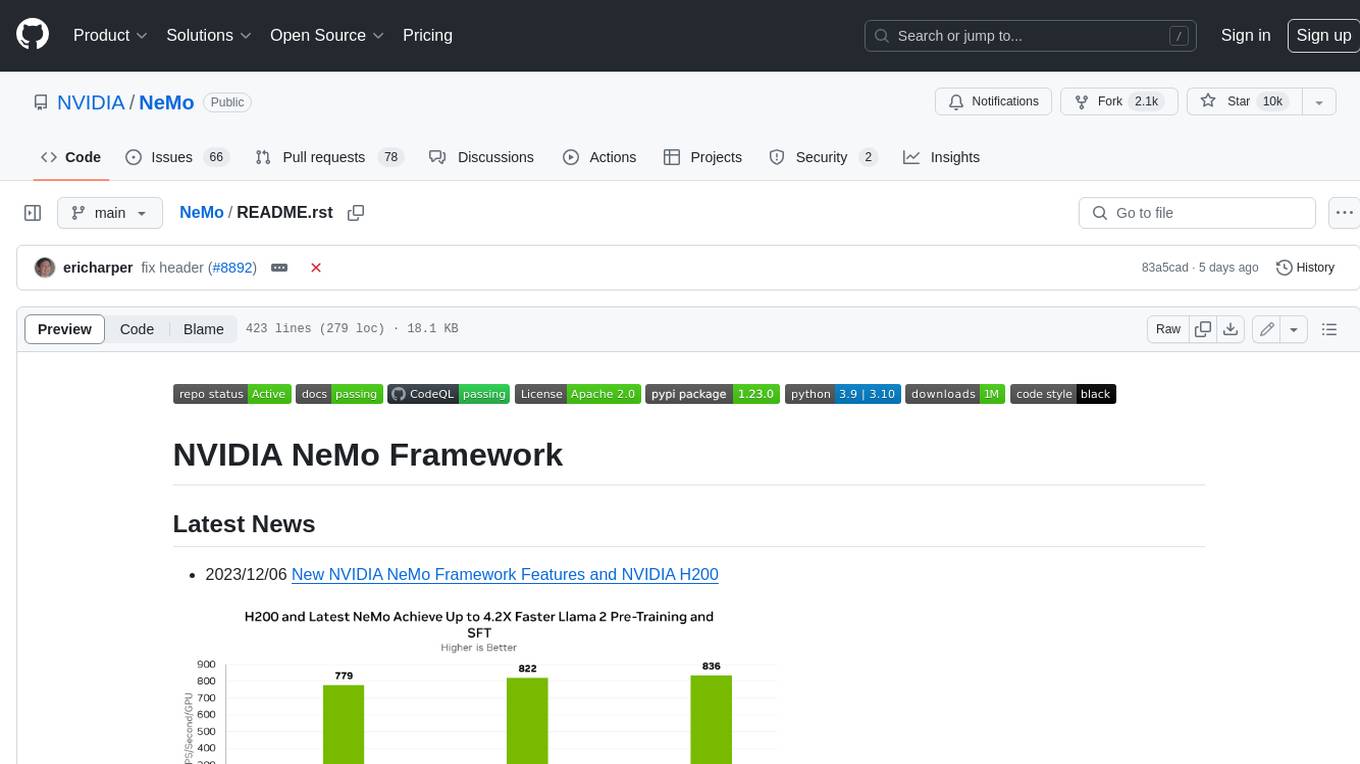
NeMo
NeMo Framework is a generative AI framework built for researchers and pytorch developers working on large language models (LLMs), multimodal models (MM), automatic speech recognition (ASR), and text-to-speech synthesis (TTS). The primary objective of NeMo is to provide a scalable framework for researchers and developers from industry and academia to more easily implement and design new generative AI models by being able to leverage existing code and pretrained models.
For similar tasks

nixtla
Nixtla is a production-ready generative pretrained transformer for time series forecasting and anomaly detection. It can accurately predict various domains such as retail, electricity, finance, and IoT with just a few lines of code. TimeGPT introduces a paradigm shift with its standout performance, efficiency, and simplicity, making it accessible even to users with minimal coding experience. The model is based on self-attention and is independently trained on a vast time series dataset to minimize forecasting error. It offers features like zero-shot inference, fine-tuning, API access, adding exogenous variables, multiple series forecasting, custom loss function, cross-validation, prediction intervals, and handling irregular timestamps.
For similar jobs

weave
Weave is a toolkit for developing Generative AI applications, built by Weights & Biases. With Weave, you can log and debug language model inputs, outputs, and traces; build rigorous, apples-to-apples evaluations for language model use cases; and organize all the information generated across the LLM workflow, from experimentation to evaluations to production. Weave aims to bring rigor, best-practices, and composability to the inherently experimental process of developing Generative AI software, without introducing cognitive overhead.

LLMStack
LLMStack is a no-code platform for building generative AI agents, workflows, and chatbots. It allows users to connect their own data, internal tools, and GPT-powered models without any coding experience. LLMStack can be deployed to the cloud or on-premise and can be accessed via HTTP API or triggered from Slack or Discord.

VisionCraft
The VisionCraft API is a free API for using over 100 different AI models. From images to sound.

kaito
Kaito is an operator that automates the AI/ML inference model deployment in a Kubernetes cluster. It manages large model files using container images, avoids tuning deployment parameters to fit GPU hardware by providing preset configurations, auto-provisions GPU nodes based on model requirements, and hosts large model images in the public Microsoft Container Registry (MCR) if the license allows. Using Kaito, the workflow of onboarding large AI inference models in Kubernetes is largely simplified.

PyRIT
PyRIT is an open access automation framework designed to empower security professionals and ML engineers to red team foundation models and their applications. It automates AI Red Teaming tasks to allow operators to focus on more complicated and time-consuming tasks and can also identify security harms such as misuse (e.g., malware generation, jailbreaking), and privacy harms (e.g., identity theft). The goal is to allow researchers to have a baseline of how well their model and entire inference pipeline is doing against different harm categories and to be able to compare that baseline to future iterations of their model. This allows them to have empirical data on how well their model is doing today, and detect any degradation of performance based on future improvements.

tabby
Tabby is a self-hosted AI coding assistant, offering an open-source and on-premises alternative to GitHub Copilot. It boasts several key features: * Self-contained, with no need for a DBMS or cloud service. * OpenAPI interface, easy to integrate with existing infrastructure (e.g Cloud IDE). * Supports consumer-grade GPUs.

spear
SPEAR (Simulator for Photorealistic Embodied AI Research) is a powerful tool for training embodied agents. It features 300 unique virtual indoor environments with 2,566 unique rooms and 17,234 unique objects that can be manipulated individually. Each environment is designed by a professional artist and features detailed geometry, photorealistic materials, and a unique floor plan and object layout. SPEAR is implemented as Unreal Engine assets and provides an OpenAI Gym interface for interacting with the environments via Python.

Magick
Magick is a groundbreaking visual AIDE (Artificial Intelligence Development Environment) for no-code data pipelines and multimodal agents. Magick can connect to other services and comes with nodes and templates well-suited for intelligent agents, chatbots, complex reasoning systems and realistic characters.








